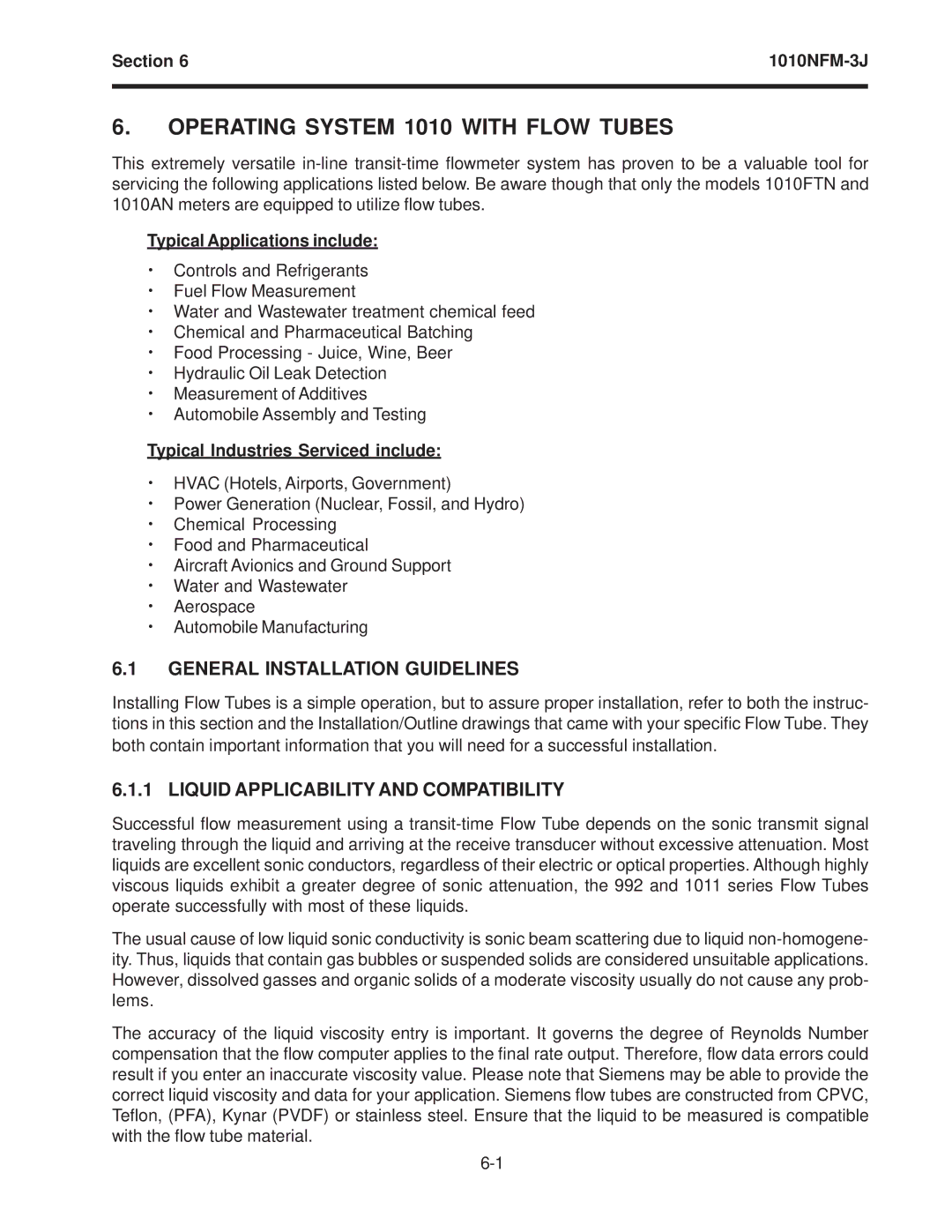Section 6 | |
|
|
6.OPERATING SYSTEM 1010 WITH FLOW TUBES
This extremely versatile
Typical Applications include:
•Controls and Refrigerants
•Fuel Flow Measurement
•Water and Wastewater treatment chemical feed
•Chemical and Pharmaceutical Batching
•Food Processing - Juice, Wine, Beer
•Hydraulic Oil Leak Detection
•Measurement of Additives
•Automobile Assembly and Testing
Typical Industries Serviced include:
•HVAC (Hotels, Airports, Government)
•Power Generation (Nuclear, Fossil, and Hydro)
•Chemical Processing
•Food and Pharmaceutical
•Aircraft Avionics and Ground Support
•Water and Wastewater
•Aerospace
•Automobile Manufacturing
6.1GENERAL INSTALLATION GUIDELINES
Installing Flow Tubes is a simple operation, but to assure proper installation, refer to both the instruc- tions in this section and the Installation/Outline drawings that came with your specific Flow Tube. They both contain important information that you will need for a successful installation.
6.1.1 LIQUID APPLICABILITY AND COMPATIBILITY
Successful flow measurement using a
The usual cause of low liquid sonic conductivity is sonic beam scattering due to liquid
The accuracy of the liquid viscosity entry is important. It governs the degree of Reynolds Number compensation that the flow computer applies to the final rate output. Therefore, flow data errors could result if you enter an inaccurate viscosity value. Please note that Siemens may be able to provide the correct liquid viscosity and data for your application. Siemens flow tubes are constructed from CPVC, Teflon, (PFA), Kynar (PVDF) or stainless steel. Ensure that the liquid to be measured is compatible with the flow tube material.
